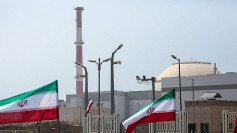The 13th human to walk on the moon - probably in October 2024 - will likely be an American woman. The National Aeronautics and Space Administration this week said it had a $28 billion plan to make it possible.
NASA Administrator Jim Bridenstine said astronauts would return to the moon "for scientific discovery, economic benefits and inspiration for a new generation of explorers."
"With bipartisan support from Congress, our 21st century push to the moon is well within America's reach. As we build up a sustainable presence, we're also building momentum toward those first human steps on the Red Planet."
The first woman to set foot on the lunar surface in the moon's south polar region will make her trip as a member of the Artemis III mission being financed by the $28 billion package. She and three other astronauts will be propelled to the moon by NASA's new Space Launch System rocket. Two only of the four will descend to the surface.
The astronauts not descending will orbit the moon aboard the Orion Multi-Purpose Crew Vehicle, or Orion MPCV, or aboard the Lunar Gateway space station. The Gateway will be a solar-powered communication hub, science laboratory, short-term habitat and warehouse for rovers and other robots.
The woman will be among 13 astronauts of NASA's 22nd astronaut group - nicknamed the "Turtles." They were assigned to the Artemis program in January. Some will go to the moon. Others might get to Mars.
There are six women among the Turtles: Lt. Kayla Barron, U.S. Navy; Zena Cardman, biologist; Loral O'Hara, research engineer, Woods Hole Oceanographic Institution; Maj. Jasmin Moghbeli, U.S. Marine Corps; Jenni Sidey, mechanical engineer, combustion scientist and lecturer and Jessica Watkins, geologist, postdoctoral fellow, California Institute of Technology.
Unlike the six Apollo missions that put astronauts on the lunar surface for less than a day, the two Artemis III astronauts will remain on the moon for about six-and-a-half days. They will operate from a moon lander being built by privately funded aerospace manufacturer and suborbital spaceflight services company Blue Origin Federation, LLC and others.
The lander is the "Integrated Lander Vehicle" - otherwise known as the National Human Landing System.
Artemis astronauts will wear modern, less bulky spacesuits allowing greater flexibility and movement compared with those worn by the Apollo missions. They will collect samples and conduct experiments.
The U.S. Apollo program landed Neil Armstrong and Edwin Aldrin on the moon in 1969. Six Apollo missions until 1972 saw 12 Americans on the moon. The last Apollo lunar landing was Apollo 17 in 1972.






